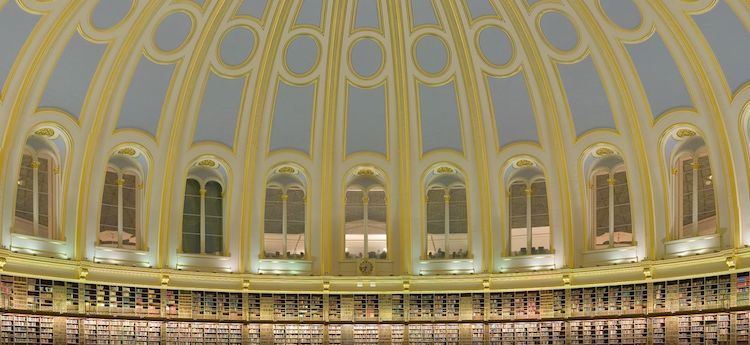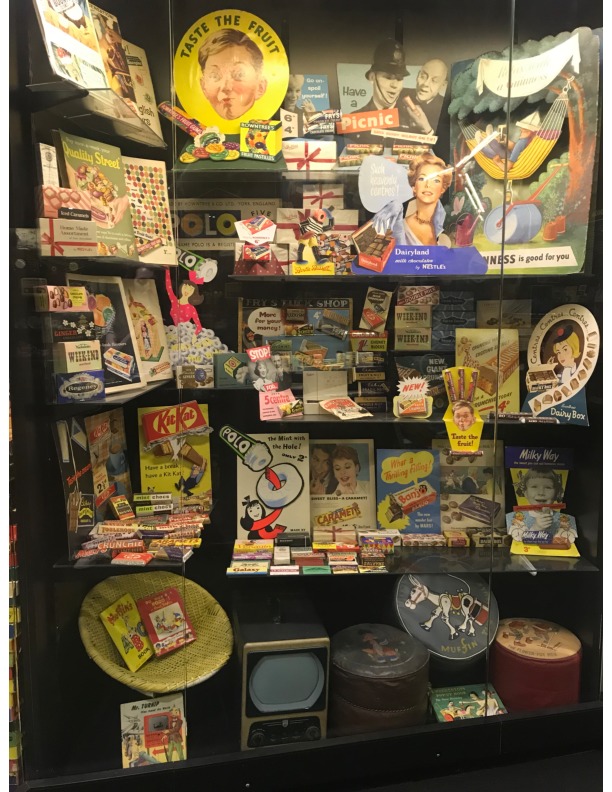What's In Your Time Capsule?
The Museum of Brands has a collection of one-and-a-half centuries’ worth of products - that is, wrappers, cans, boxes, magazines, and toys. Seemingly thrown onto shelves at first glance, this unique museum actually tells a well thought-out story as you walk through the Time Tunnel - a black, twisty hallway that showcases thousands of brightly-colored objects. It is important to note that there is only one way to go in the tunnel - you are being forced to view the exhibit in the specific order. The tunnel starts with the Victorian Age and works its way up to present-day. What are the advantages to organizing it in this order instead of working your way backwards in history? Firstly, it makes more sense to experience these products as the world experienced them. You get to see how products and brands you are familiar with developed. For example, toothpaste used to be sold in a tin can, as opposed to the tubes they are sold in today. It would be pointless to start with present-day materials because you are already familiar with them. What we have now does not mean anything unless we look back. Something I found particularly interesting was the magazines designed specifically for women. In them were sewing patterns and the latest trends. It was interesting to see how fashions evolved as well as how women were represented in the media. The way the Time Tunnel is organized emphasizes the importance of seeing how far we have come. This collection of cheap, everyday products has a valuable message that the collector, Robert Opie, wants to share with the world. In this article, he says that these products tell the human story and to “never underestimate nostalgia.” I definitely see his point, and it got me thinking. What other time capsules did I see in London, and of what will 2019’s time capsule consist?
In a way, the Victoria and Albert Museum is a time capsule. It is filled with breathtaking paintings, furniture, decor, and clothing from various cultures dating back thousands of years, organized on different floors by years and cultures. An area I spent a lot of time in was the Renaissance Era in Europe. I was blown away by the gorgeous paintings, statues, and furniture. Ordinary objects like tea sets, dressers, and chairs were intricately decorated. An octave spinet (which looks like a small piano) caught my eye. It had a beautiful painting on the lid. To me, putting art on something that created art almost seems like overkill. But, this is just an example of what the European people during the Renaissance valued. They placed importance on art, music, and philosophy, and only the wealthy were lucky enough to be able to learn it. Today, many scoff at pursuing an education in art. Another reoccurring theme I noticed on the Renaissance Era floor was religion, mostly Christianity. There were various pieces taken from altars. There were a lot of crucifixes and scenes from Jesus’ life and His Passion. These pieces of art point to a strong devotion to religion. Did the Victoria and Albert Museum or the Museum of Brands tell a more successful, realistic story of the human experience? I would argue that although the art in the Victoria and Albert Museum is gorgeous, it only represents a small percentage of people - the wealthy. The point of the museum was to showcase marvelous pieces of art and therefore only shows the exceptional. Not everyone in the Renaissance Era had access to an octave spinet, let alone the ability to play it. The Museum of Brands, showing things as minuscule as candy wrappers, represents a much larger portion of humankind. It shows the evolution of humans in a way that a normal person would have experienced it, thus reaching a much larger audience.
There are a few things I think would fit in the 2019 time capsule. There is no avoiding the mention of social media and its influence. It came into play when I stopped by a gelato shop near Trafalgar Square. To my delight, the gelato was served to look like a flower, with the ice cream acting as the petals and the cone as the stem. I quickly snapped a picture to post on Snapchat with the location. To me, it was automatic to post it. Reflecting on it though, I wonder, do restaurants have to come up new, “Instagram-worthy” ways of serving their food? It definitely benefits them - not only did I take a picture, but I also mentioned which restaurant I purchased it from. That is free advertising! Nowadays, it is not enough to just have good food. It must look cute too. Another example of this phenomenon is the bubble waffle shop that had a line out the door. I knew about them even before going to London; it was on my London bucket list. It is funny how a bubble waffle cone was on the same list as a world-renowned museum. Another snapshot I would put into the time capsule is the Six fan art. This is an example of how people get obsessed over popular culture, whether it is a show, book, movie, performance, or celebrity. Because we have instant access to these celebrities, shows, movies, etc., it is easy to make them a part of our daily lives. Fan-fiction and fan art are relatively new phenomenons where the story itself is not enough anymore. Fans of it go on and create their own stories and artwork in relation to the original story. A performance inspiring people to create art can be seen as a beautiful thing, but sometimes it can get to the point of almost revering them. Instead of paintings of scenes from Jesus’ life, as featured in the Victorian and Albert Museum, celebrities and fictional characters are painted. Although admittedly a little extreme, this comparison still begs the question “Who do people really revere?”
Some objects have obvious clues telling the period in which it was created, but some things and values withstand the passing of time. Of course, historical buildings and museums are still celebrated and receive millions of visitors from over hundreds of countries. Iconic buildings can undergo construction to ensure that they remain undamaged for a long time, i. e. Big Ben. Another example is that Shakespeare and his works are still celebrated some four hundred years after his death. A nearly exact replica of the Globe has been rebuilt. It hosts plays performed in the same way they were performed in Shakespeare’s day as well as tours and a gift shop. He still inspires other artists as well, shown by a beautiful mural I passed in a tunnel.
Robert Opie curated thousands of products because he knew the importance of remembering from where we came. Thanks to him, we can look back and say “Fifty years ago this is what a Kit Kat looked like,” or “This is what kids played with one hundred years ago.” The Victoria and Albert Museum has a similar intention. It has a much bigger collection that spans thousands of years and many cultures, but still only represents a small percentage of people. It was inspiring to see this and think about what would be in my own Time Tunnel. It was enlightening to think about what humans value and revere today, and if we can learn anything from looking at other time capsules.
By Jill Johnson


